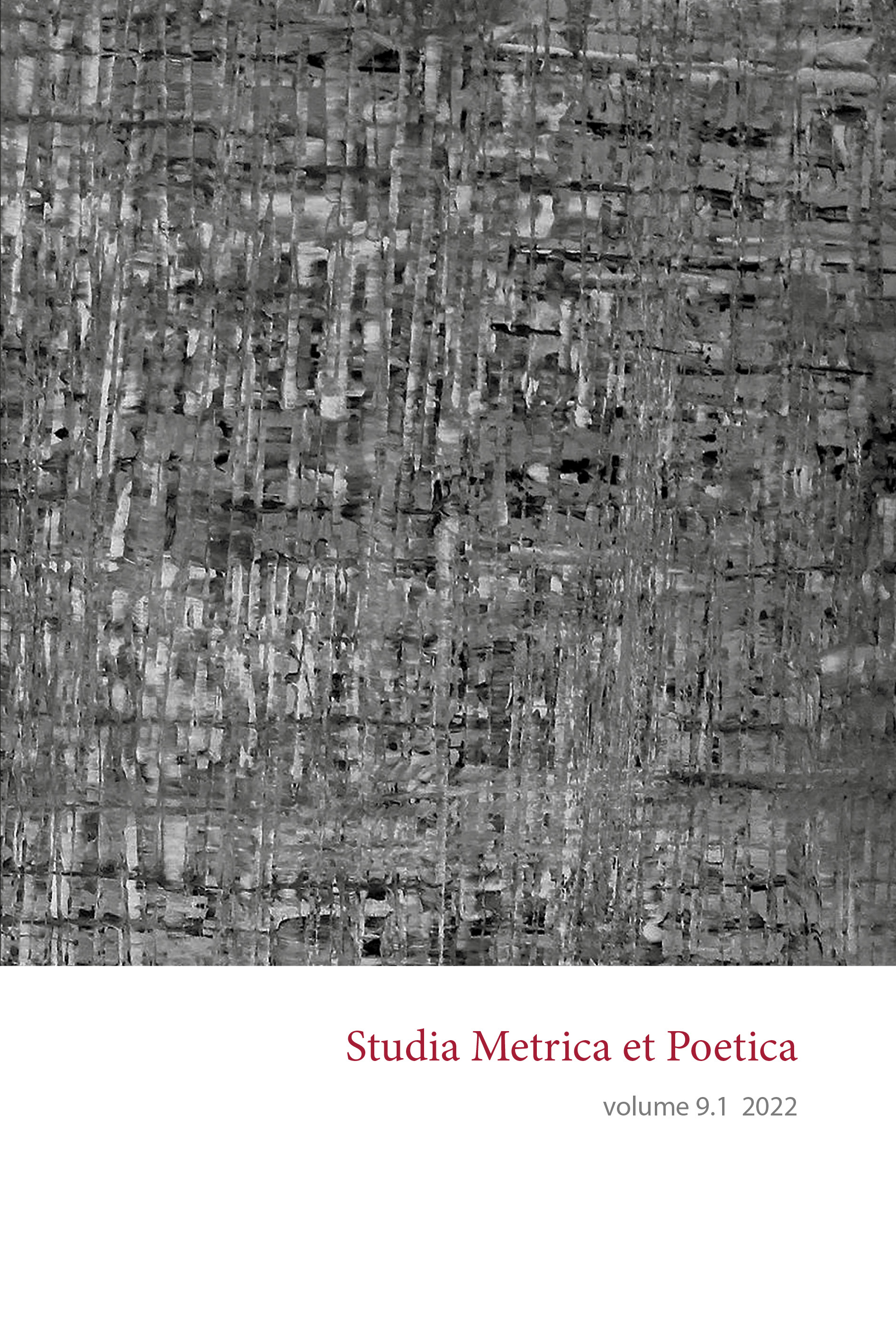Rhythm, Syntax, Punctuation: A Distant Analysis of the European Sonnet
DOI:
https://doi.org/10.12697/smp.2022.9.1.03Keywords:
sonnet, rhythm, syntax, strophic syntax, stanzaic syntax, digital humanities, quantitative methodsAbstract
Elaborating on an analysis of a corpus of more than 1200 sonnets by Italian, French, Spanish, English and Russian authors, this article describes the general rhythmic-syntactic arrangement of thirteenth- and fourteenth-century Italian sonnets, European Petrarchist sonnets, and several experiments with this form in the nineteenth and twentieth centuries. It presents results obtained with the help of a computer program developed for the automated analysis of strophic syntax. The program was created using Boris Tomashevsky’s method based on analyzing the punctuation at the end of poetic lines (the strength of the syntactic pause is evaluated depending on the absence or presence of a punctuation sign: i.e., a comma, a dash, a semicolon, or a full stop / question mark / exclamation mark). We supplemented this with two more indices also based on punctuation. The first characterizes the length of sentences (the percentage of sentences in one line, two lines, three lines, etc.), and the second characterizes the number of sentences that end with a full stop, which comes in the middle of a line followed by the beginning of the next sentence in the same line (or, which is the same, the number of such lines). This study demonstrates that both the number of lines with a strong pause in the middle and the number of short sentences have increased over time.


